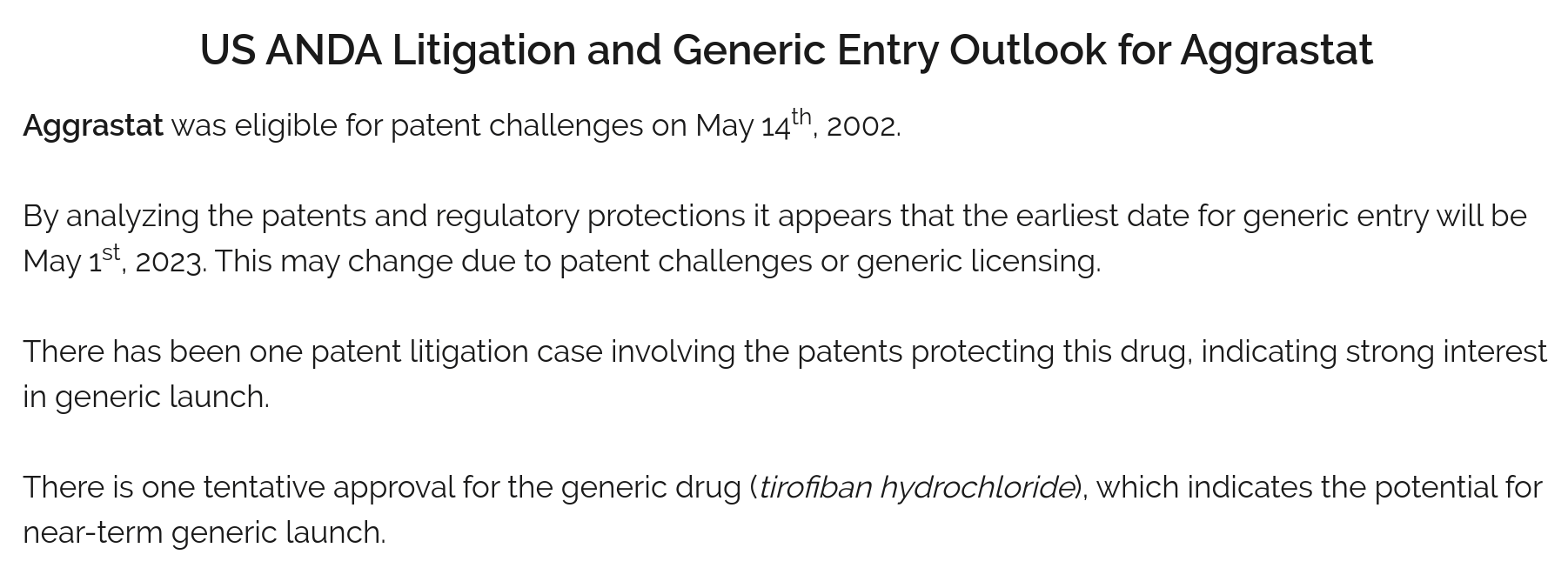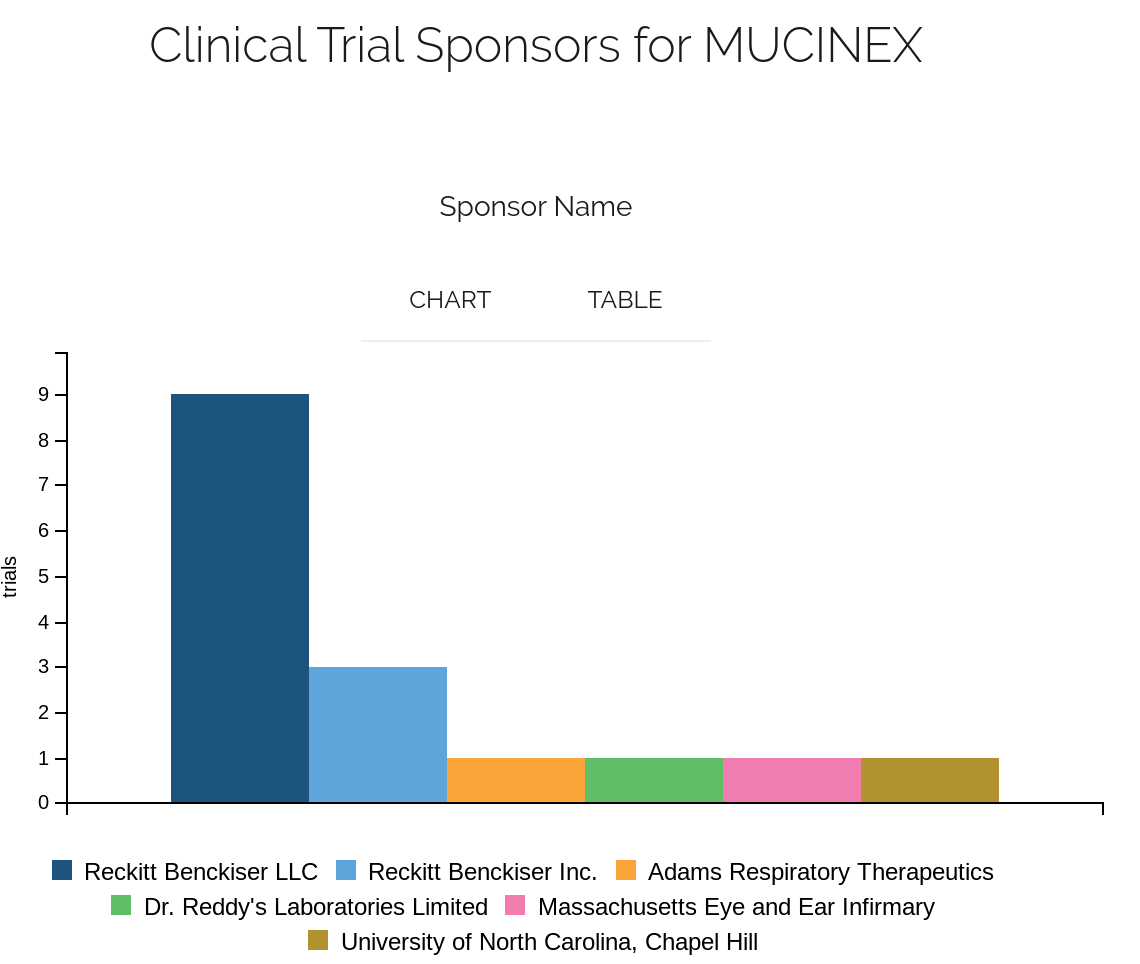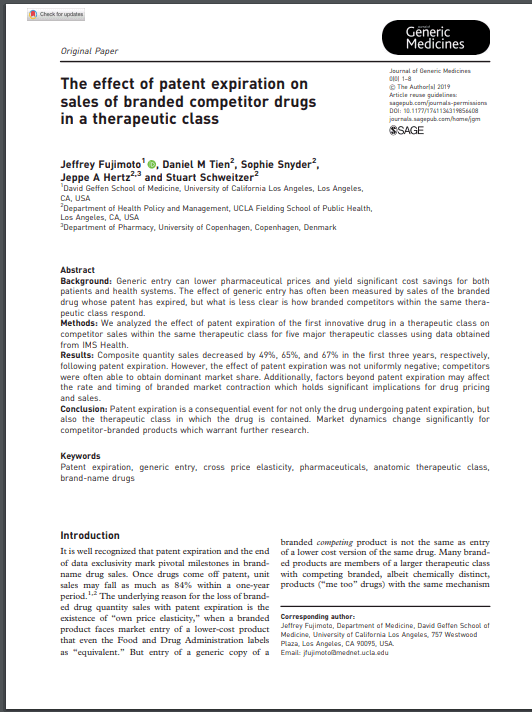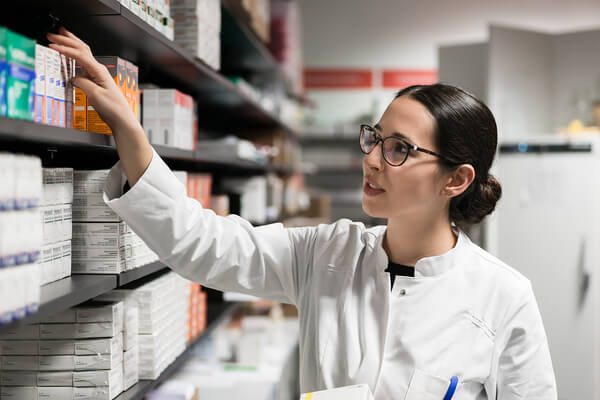In the complex pharmaceutical landscape, branded generics have emerged as a significant market segment that combines elements of both generic and brand-name medications. These products have carved out a unique and profitable niche that benefits both manufacturers and, in some cases, consumers. The global branded generics market was valued at USD 240.75 billion in 2022 and continues to grow at a considerable pace, demonstrating the increasing importance of this pharmaceutical category. This report examines what branded generics are, their market positioning, economic advantages, and why they continue to be profitable for pharmaceutical companies worldwide.
Defining Branded Generics
Conceptual Framework and Differentiation
Branded generics represent a distinct category within the pharmaceutical industry, referring to generic drugs that have been given proprietary brand names. Unlike traditional generic medications that are typically marketed under their chemical or international nonproprietary names (INN), branded generics sport a catchy, trademarked name that enhances marketability and consumer recognition1. IMS Health, which began tracking and reporting on branded generics in 2002, defines the category as including prescription “products that are either novel dosage forms of off-patent products produced by a manufacturer that is not the originator of the molecule, or a molecule copy of an off-patent product with a trade name”5. This definition is used by regulatory bodies including the FDA and the United Kingdom’s National Health Service, providing standardization for this classification across markets5.
The distinction between traditional generics and branded generics lies primarily in marketing strategy rather than pharmaceutical composition. Both categories contain the same active ingredients as their reference brand-name counterparts and must demonstrate bioequivalence to these originator drugs. However, branded generics benefit from marketing efforts that create brand recognition and potential brand loyalty, distinguishing them from their plain generic counterparts1. This strategic positioning allows manufacturers to command slightly higher prices than standard generics while still offering costs significantly below the original branded medication.
Market Positioning Strategy
Branded generics occupy a middle ground in the pharmaceutical market, positioned between high-cost originator brands and low-cost unbranded generics. This strategic positioning allows manufacturers to benefit from aspects of both segments – leveraging the cost efficiencies of generic production while retaining some brand premium1. Examples of successful branded generics include Cryselle (a contraceptive containing norgestrel and ethinyl estradiol), Digitek (digoxin), Nifedical (nifedipine), and Levoxyl (levothyroxine), all of which are recognized by many prescribers and patients by their brand names rather than their chemical compositions15.
The positioning of branded generics varies significantly across global markets. In more mature pharmaceutical markets like the United States, branded generics often represent specialty or niche products, while in emerging markets, they frequently constitute a substantial portion of prescription medications. This varied positioning reflects different market structures, regulatory environments, and consumer preferences across regions, making branded generics a versatile category adaptable to diverse market conditions worldwide.
The Global Branded Generics Market
Size and Growth Trajectory
The branded generics segment has demonstrated remarkable growth and resilience within the global pharmaceutical industry. As of 2022, the global branded generics market reached an estimated USD 240.75 billion, with projections indicating a compound annual growth rate (CAGR) of 5.7% from 2023 to 20302. This substantial market size reflects the significant role branded generics play in global pharmaceutical consumption, particularly in emerging markets where they often dominate prescription drug sales. Despite representing only a fraction of pharmaceutical products, branded generics generate considerable revenue streams for manufacturers who have strategically invested in this category.
The growth of the branded generics market has been consistent across regions, though with varying intensities. Mature markets like North America and Europe show moderate growth rates, while emerging pharmaceutical markets in Asia, Latin America, and Africa demonstrate more aggressive expansion. This geographical disparity in growth rates reflects different stages of market development, healthcare system structures, and regulatory frameworks governing pharmaceutical access and pricing. The robust growth trajectory of branded generics indicates their continued importance in the global pharmaceutical landscape for the foreseeable future.
Market Drivers and Challenges
Several factors contribute to the ongoing expansion of the branded generics market globally. The rising prevalence of chronic diseases has increased demand for long-term medication therapies, creating opportunities for branded generic manufacturers to provide more affordable alternatives to costly branded treatments2. Additionally, increasing government initiatives to promote generic products as cost-containment measures in healthcare systems have supported market growth. The expiration of patent exclusivity for numerous blockbuster drugs has also opened doors for generic manufacturers to introduce branded versions at reduced prices2.
The approval and launch of generic products represent another crucial driver for market expansion. According to FDA annual reports, the agency approved 93 first generics in 2021, compared to 72 in 2020, demonstrating continued regulatory support for generic market entry2. However, the data also reveals potential challenges, as the total number of Abbreviated New Drug Application (ANDA) approvals decreased from 1,014 in 2019 to 776 in 2021, potentially signaling regulatory bottlenecks or market saturation in certain therapeutic areas2.
The COVID-19 pandemic moderately impacted the branded generics market, causing disruptions in pharmaceutical supply chains and slowing regulatory operations. Authorization processes, Health Technology Assessments, and reimbursement decisions were deprioritized during peak pandemic periods, affecting the introduction of new branded generics to various markets2. Despite these temporary setbacks, the fundamental market drivers remain strong, supporting continued growth in the branded generics segment.
The Economics of Branded Generics
Profit Margin Analysis
The profitability of branded generics represents one of their most attractive features for pharmaceutical manufacturers. While branded generic manufacturers typically achieve lower gross profit margins than originators of patent-protected drugs, they nevertheless maintain healthy profitability that exceeds many other industries. Industry analysis indicates that generic drug manufacturers, including those producing branded generics, typically achieve gross profit margins of approximately 40%, compared to the 80% margins often seen with patent-protected branded medications4. This margin differential reflects fundamental differences in business models and cost structures between these pharmaceutical segments.
Despite lower percentage margins, branded generics can be highly profitable due to several compensating factors. The reduced research and development expenditure allows companies to achieve profitability with lower gross margins. Additionally, manufacturers of branded generics benefit from economies of scale, as they typically produce high volumes of established molecules with optimized manufacturing processes4. The competitive advantage comes not from high margins on individual units but from efficient operations and strategic marketing that enable sustainable profitability across large production volumes.
Cost Structure Comparison
The cost structure of branded generic manufacturers differs significantly from that of original branded drug producers, explaining the variance in profit margins between these categories. Original branded drug developers incur substantial costs throughout the research, development, and clinical trial phases, often investing billions of dollars before bringing a new molecule to market4. These substantial upfront investments justify the high margins during patent-protected periods, as companies seek to recoup development expenditures and fund future innovation.
In contrast, branded generic manufacturers bypass much of the extensive research and development process, focusing instead on developing bioequivalent formulations of existing molecules once patent protections expire4. The regulatory approval process for branded generics is substantially streamlined compared to novel drugs, requiring demonstration of bioequivalence rather than full clinical efficacy and safety trials. This abbreviated approach significantly reduces development costs and time-to-market, allowing branded generic manufacturers to operate profitably despite lower price points and margins4.
Manufacturing efficiency and cost control represent critical competitive advantages for branded generic producers. By optimizing production processes and leveraging large-scale manufacturing capabilities, these companies can reduce per-unit costs while maintaining quality standards that meet regulatory requirements. This manufacturing efficiency, combined with targeted marketing strategies that build brand recognition without massive promotional expenditures, enables the sustainable profitability that characterizes successful branded generic business models.
Business Models and Competitive Strategies
Marketing and Brand Development
The marketing approach for branded generics differs substantially from both traditional branded pharmaceuticals and unbranded generics. Unlike originator brands that invest heavily in physician detailing and direct-to-consumer advertising, branded generic companies typically employ more targeted, cost-efficient marketing strategies. These approaches focus on building brand recognition among healthcare providers and pharmacists while maintaining the cost advantages inherent to generic production1. The marketing value proposition centers on offering reliable quality at an intermediate price point, positioning branded generics as a reasonable compromise between high-priced originators and unbranded alternatives.
Brand development for these products often emphasizes concepts like reliability, consistency, and trustworthiness, attributes that resonate with healthcare providers and patients alike. By creating recognizable brand identities, manufacturers enable healthcare providers to prescribe medications with confidence and allow patients to request specific products by name. This brand familiarity creates a competitive advantage over unbranded generics while avoiding the massive marketing expenditures associated with traditional branded pharmaceuticals15.
Successful Company Case Studies
Several pharmaceutical companies have built successful business models centered on branded generics, demonstrating the viability of this strategic approach. Indian pharmaceutical giant Ranbaxy, which merged with Japan’s Daiichi Sankyo in 2008, built substantial value through its portfolio of branded generics sold primarily outside the United States5. The combined entity became the 15th largest pharmaceutical company globally by sales, highlighting the significant scale achievable through branded generics. Similarly, Dr. Reddy’s Laboratories pursued strategic growth by acquiring smaller firms that manufacture branded generics, expanding its portfolio and global reach5.
Specialty pharmaceutical companies have also found success in branded generics within specific therapeutic areas. Fougera, specializing in topical dermatologic products, began producing branded generics in the mid-1990s, establishing a strong position in this niche market5. These company examples illustrate different approaches to branded generic strategy – from broad-based pharmaceutical portfolios across multiple therapeutic areas to highly specialized products addressing specific medical needs. The common thread among successful branded generic businesses is their ability to create value through strategic positioning between high-priced originators and commodity-like unbranded generics.
Impact on Healthcare Systems and Consumers
Price Dynamics and Cost Implications
Branded generics occupy a distinct position in pharmaceutical pricing structures, typically priced below original branded drugs but above unbranded generics. This intermediate pricing strategy allows for cost savings compared to originator brands while generating higher margins than unbranded alternatives36. For healthcare systems, branded generics can offer significant cost containment opportunities, particularly in therapeutic areas where physicians or patients express preference for branded products over unbranded generics.
However, recent evidence suggests that the pricing dynamics of the generic pharmaceutical supply chain in the United States may limit the potential cost savings from branded generics and other generic products. Studies indicate that U.S. consumers often overpay for generic drugs due to practices by pharmaceutical benefit managers (PBMs) and other intermediaries who leverage opaque pricing mechanisms to increase their own profits6. These practices include spread pricing (charging payers more than what is paid to pharmacies), copay clawbacks, and formulary designs that favor higher-cost medications over less expensive alternatives6.
Access and Affordability Considerations
Despite supply chain inefficiencies, branded generics contribute significantly to medication affordability and accessibility globally. In the United States, generic medications (including branded generics) account for approximately 90% of dispensed prescriptions while representing only about 18% of total retail prescription drug expenditures, which reached nearly $350 billion in 20206. This disparity highlights the substantial cost savings generated by generic alternatives to branded medications.
The availability of branded generics particularly benefits patients in healthcare systems with limited drug coverage or high out-of-pocket costs. By offering medications at prices substantially below originator brands while maintaining quality standards, branded generics expand access to essential medications for chronic conditions and acute illnesses3. In emerging markets with less developed healthcare infrastructure, branded generics often represent the primary source of pharmaceutical treatments, providing a balance between quality assurance and affordability that unbranded generics sometimes fail to deliver due to quality concerns or lack of regulatory oversight.
Regulatory Environment and Future Outlook
Current Regulatory Framework
The regulatory landscape for branded generics largely follows the broader framework for generic pharmaceuticals, with some variations across global markets. In the United States, branded generics undergo the same Abbreviated New Drug Application (ANDA) process as unbranded generics, requiring demonstration of bioequivalence to reference products without extensive clinical trials23. This streamlined approval pathway significantly reduces development costs and time-to-market compared to novel drug approvals, contributing to the economic viability of branded generics.
Patent expiration timelines represent a critical factor in the regulatory environment for branded generics. The expiry of patent exclusivity for innovator drugs creates opportunities for generic manufacturers to introduce alternative products at reduced prices2. The timing of these patent expirations varies considerably across products, creating a staggered landscape of market entry opportunities for branded generic manufacturers. This variability necessitates strategic planning by companies to align product development pipelines with anticipated patent expirations in target therapeutic areas.
Industry Trends and Future Prospects
Several trends indicate continued growth and evolution in the branded generics segment. The ongoing patent expiration of blockbuster drugs continues to create opportunities for branded generic introduction across multiple therapeutic areas24. Additionally, increasing healthcare cost pressures worldwide incentivize greater utilization of cost-effective alternatives to high-priced branded medications, creating favorable market conditions for branded generics that offer quality assurance with cost advantages.
The pharmaceutical market increasingly features dynamic interactions between branded and generic drug companies, with the entry of generics significantly impacting the revenue streams and strategies of branded manufacturers4. This competitive landscape drives innovation in business models, with some traditional branded pharmaceutical companies establishing branded generic divisions or acquiring existing generic manufacturers to diversify their portfolios and revenue streams. Simultaneously, leading generic companies continue to expand their branded generic offerings, recognizing the value premium these products command over unbranded alternatives.
The future of branded generics appears promising, with projected market growth reflecting their continued importance in global pharmaceutical markets. As healthcare systems worldwide struggle with cost containment amid rising demand for pharmaceutical treatments, branded generics offer a middle path that balances quality assurance with affordability. This value proposition positions branded generics for continued success, particularly in emerging markets where brand recognition often carries significant weight in prescribing and dispensing decisions.
Conclusion
Branded generics represent a strategic pharmaceutical category that combines elements of both branded and generic drug business models. By providing generic medications with proprietary brand names, manufacturers create products that generate higher margins than unbranded generics while offering substantial cost advantages over originator brands. This intermediate positioning has proven highly successful, with the global branded generics market reaching USD 240.75 billion in 2022 and projected to grow at a CAGR of 5.7% through 2030.
The profitability of branded generics stems from their unique economic structure, which bypasses the extensive research and development costs of novel drugs while commanding price premiums over unbranded alternatives. Though branded generic manufacturers achieve lower gross margins than originators of patent-protected drugs (approximately 40% versus 80%), they benefit from manufacturing efficiencies, streamlined regulatory pathways, and targeted marketing strategies that enable sustainable profitability across large production volumes.
For healthcare systems and patients, branded generics offer meaningful cost savings compared to originator brands while providing quality assurance that may be perceived as superior to unbranded alternatives. Despite supply chain inefficiencies that sometimes limit their full cost-saving potential, branded generics contribute significantly to medication affordability and accessibility globally. As patent expirations continue to create opportunities for generic market entry and healthcare systems intensify focus on cost containment, branded generics are positioned for continued growth and relevance in pharmaceutical markets worldwide.
Citations:
- https://www.drugpatentwatch.com/blog/branded-generics-what-they-are-and-why-theyre-profitable/
- https://www.grandviewresearch.com/industry-analysis/branded-generics-market
- https://www.cedars-sinai.org/blog/generic-vs-brand-name-drugs-whats-the-difference.html
- https://makkahnewspaper.com/article/1616398/english-opinion/gross-profit-margins-betweenbrandedandgenericpharmaceutical-and-biotechcompanies
- https://www.pharmacytimes.com/view/2008-10-8707
- https://schaeffer.usc.edu/research/u-s-consumers-overpay-for-generic-drugs/
- https://www.rightwayhealthcare.com/blog/the-generic-drug-pricing-game
- https://www.abbott.com/corpnewsroom/strategy-and-strength/why-branded-generic-matter.html
- https://www.investopedia.com/terms/g/generic-brand.asp
- https://schaeffer.usc.edu/research/flow-of-money-through-the-pharmaceutical-distribution-system/
- https://www.cda-amc.ca/similarities-and-differences-between-brand-name-and-generic-drugs
- https://www.drugpatentwatch.com/blog/branded-generics-promise-profits-for-drugmakers-peace-of-mind-for-patients/
- https://www.fda.gov/media/133509/download
- https://www2.deloitte.com/content/dam/Deloitte/us/Documents/life-sciences-health-care/us-lshc-deloitte-generics-overview.pdf
- https://www.futuremarketinsights.com/reports/branded-generics-market
- https://aspe.hhs.gov/reports/analysis-new-generic-markets-effect-market-entry-generic-drug-prices
- https://www.pharmacytimes.com/view/the-fda-generics-and-differentiating-authorized-from-branded-types-
- https://www.drugchannels.net/2010/06/wholesaler-profits-brand-vs-generic.html
- https://www.drugs.com/article/generic_drugs.html
- https://kpmg.com/kpmg-us/content/dam/kpmg/pdf/2023/generics-2030.pdf
- https://pmc.ncbi.nlm.nih.gov/articles/PMC8841453/
- https://www.uhhospitals.org/blog/articles/2022/07/generic-vs-brand-name-drugs-is-there-a-difference
- https://kpmg.com/us/en/articles/2023/generics-2030-curb-downward-spiral.html
- https://www.fda.gov/drugs/frequently-asked-questions-popular-topics/generic-drugs-questions-answers
- https://www.fiercepharma.com/pharma/top-10-generic-drugmakers-2021-revenue
- https://www.pfizer.com/products/how-drugs-are-made/branded-versus-generics
- https://pmc.ncbi.nlm.nih.gov/articles/PMC5417581/
- https://www.fda.gov/about-fda/center-drug-evaluation-and-research-cder/generic-competition-and-drug-prices
- https://accessiblemeds.org/resources/blog/generic-drug-supply-chain/
- https://accessiblemeds.org/resources/video/generic-drug-prices-vs-brand-drug-prices/
- https://journals.sagepub.com/doi/10.1177/1741134320947773
- https://carey.jhu.edu/articles/generic-brand-medication-cost
- https://www.gabionline.net/generics/research/Pricing-strategies-in-generic-medicines
- https://www.health.harvard.edu/staying-healthy/do-generic-drugs-compromise-on-quality
- https://www.econlib.org/library/Enc/BrandNames.html
- https://accessiblemeds.org/resources/blog/generic-medicines-drug-shortages-challenges-sustainability/
- https://www.bcg.com/publications/2020/paths-to-value-for-united-states-generics
- https://pmc.ncbi.nlm.nih.gov/articles/PMC2413363/
- https://pmc.ncbi.nlm.nih.gov/articles/PMC4519629/
- https://qualitymatters.usp.org/complex-generics-need-and-challenges
- https://www.tandfonline.com/doi/full/10.1080/13696998.2021.1952795
- https://liberalarts.oregonstate.edu/sites/liberalarts.oregonstate.edu/files/economics/2007_-_jafio_-_generic_adv.pdf
- https://livingeconomics.org/article.asp?docId=61























